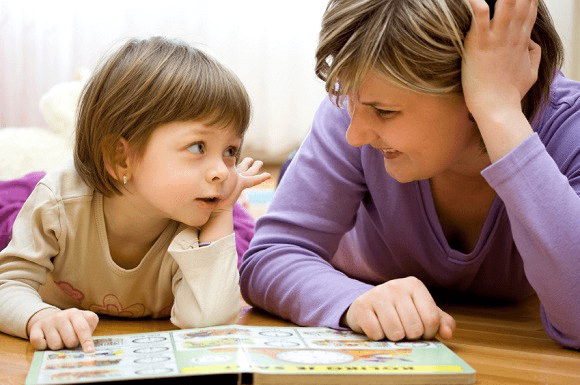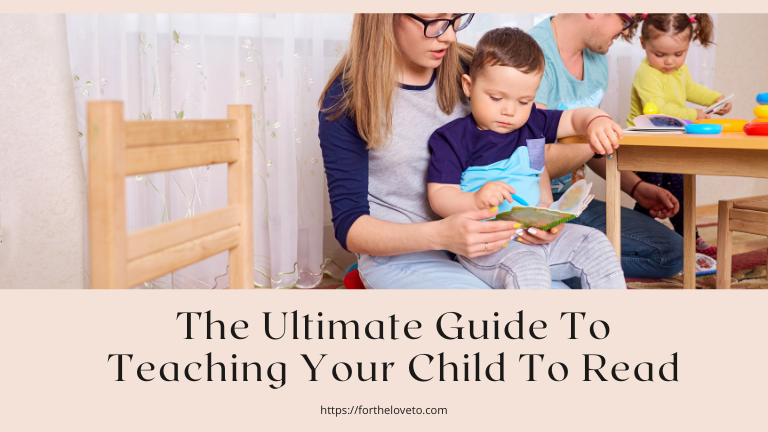This post goes live in collaboration with the guest contributor, Elice Max. Thank you, Elice, for your great work.
Teaching your child to read as soon as he starts to speak is important. That’s where his education begins. In fact, if your child has a home library, with as few as 20 books of his own, he is more likely to achieve three more years of schooling as compared to the child who doesn’t have a shelf full of books.
However, before embarking on this quest, you need to prepare yourself. Teaching your kid to read isn’t as easy as it seems. It takes your time, devotion, and dedication. The moment you sit on the floor with your legs crossed, all set to introduce your child to an entirely new chapter of his life, you realize you don’t know where to start. Even if your child is eager to learn to read, there are still so many challenges you need to prepare yourself for. Having a guideline helps a lot when it comes to teaching your child something new. This is why schools design a curriculum every year before the academic year begins. Having a guideline to follow makes the process of taking your child from a non-reader to a reader much easy.
Teaching your child to read is a big responsibility. We understand various questions pop in your mind when you sit down to teach your child something new. You wonder if you could even be trusted to do this. However, with a little help from the internet and some professional books, you can prepare yourself to teach your child to read. If you are looking for an ultimate guideline, this article is for you.
Today, we are going to discuss the step-by-step process of teaching your child to read. So, let’s get into the details.
The ultimate guideline to teaching your child how to read
The following are the steps you need to follow when it comes to teaching your child how to read.
Cultivate pre-reading behaviors
Before you start teaching your child how to read to need you to cultivate pre-reading habits in him. Apart from reading, various activities set the foundation for good reading habits. You need to allow your kid to participate in such activities to make him a good reader. These pre-reading activities are not out of ordinary. They either appear through your child’s own ability to observe and learn or mimicking the words that you use on a daily basis. You can even encourage your children to speak certain words and try to ask for their meaning.

Following are a few of the prereading habits you can encourage your child to develop:
Awareness of visuals:
Before your child even learns how to read or spell out certain words, he needs to have a visual idea of what they are. He should be able to identify labels, signs or packaging. For example, he recognizes McDonald’s sign before even being able to read the letters.
Games for sound manipulation:
Play sound manipulation games with your child. For example, the Name Game. “Hannah Hannah banana, banana-fana, fo-fana, me-my-mo-mana, Hannah”. Such games will allow your child to recognize when two words sound the same.
Way to hold a print:
Before he learns to read, your child needs to know which way is up on the book. He needs to learn in which direction a page needs to be turned. He also needs to know only one page needs to be turned at a time. Make sure to point the words you read so that your child knows where to look and which way to read the word from.
Discriminate sounds:
“Alex is eating an apple”. Use the kind of words that start from the same letter so that your child learns how a letter sounds no matter where it is used.
Once your child starts to demonstrate these abilities and behaviors, it means he is all set to learn to read. By working on such activities in your day-to-day routine, you can head your child in the right direction. Make sure you always read aloud to your child. Make this experience as enjoyable as possible for them. Reward them with a candy or a new toy when he learns to read a new word, this will motivate him to be more eager to read.
Now that your child knows the basics, it’s time to grab some books (preferably with some interesting visuals), have him sit with you and get down to business. You can save on kids clothing and books by using discount coupons and promo codes.
Teaching Your Child Letters
Once your child is familiar with the basics, he is ready to be introduced to letters. One of the most common mistakes parents make while teaching their children to read is they try to teach them letters in alphabetical order. Being too young to understand the order, it is too much for the child not only to memorize letters but their alphabetical order. Start with the easiest ones. Something that your child can pronounce right away without a problem. By finding alphabets easy to learn, your child will not only feel excited when he learns them but it will also motivate him to keep learning. The key is to keep it simple and fun. Following are some of the things you need to keep in mind while teaching your kids letters:
Divide the learning process into two parts:
When it comes to learning letters, there are two skills involved. While teaching alphabets to your child you need to make sure he:
- Visually identifies the letter
- Memorize its sound
Leave the letter that makes more than one sound for the later. It may confuse your child and he might lose interest in learning.
Senses and movements help the child to memorize:
As a kid, the best abilities one has ia his sight and other senses. Therefore, while teaching your child to read, you need to design your teaching strategy around these senses. There are various creative ways to go about that. You can write the letter with your finger at the back of his palm or you can use clay to build a letter. Make it more exciting by associating a motion with the letter or singing it like a song.
You have to be patient:
For your child to learn, just one exposure is not enough. It takes a lot of memorization for your child to learn his first letters and sounds. So, you have to be patient with the process. Don’t rush it. Provide your child the space to understand the letter and incorporate regular reviews for the memorization to happen.
Teach them to Blend Sounds
Teaching letters to your child may take longer than you have thought. However, once he is familiar with the letters, it’s time to teach him to read words. Learning words is all about blending sounds that alphabets make together. One of the best techniques to teach your child how to blend sounds include:
- Select a word that contains two to three letters. Point to one letter at a time and pronounce its sound.
- Now start over. Stretch the sounds slowly as you move your finger under the word. Now pronounce the entire word together.
- Ask your child to do the same. Read for him or with him again if he finds it hard to pronounce.
Since it’s just the beginning, you need to choose easier words. Select those words where letters make their usual sound. Don’t go for the words where two letters meet to make an entirely new sound.
Introduce Your Child with Sight Words
Sight words are short words that are frequently used in sentences. The majority of the time, these words don’t have a specific spelling rule to follow. You can teach your child the words that he can memorize by sight first. Some of these words include, yes, no, the, look, do, and more. These words are easy to memorize by sight. You don’t need to go through the above-mentioned process of sounding them out for your child to learn.
Various ways are using which you can make your child learn sight words including:
- The use of flashcards
- Word searching games in books
- With the help of computer games
- Patterned or predictable text
Predictable text is a great way to help your child learn how and where to use sight words in a sentence. In this technique, you introduce your child with the same type of sentences where only one word has been replaced. By reading the same type of sentences over and over again, your child learns what does a sight word means and where can it be used. With a lot of practice, your child finally learns these words and it gets easier for him to proudly read sentences out loud.
Familiarize your child with word families
Dividing words into word families make them a lot easier for your child to learn. It is a smart way to teach your child how to read. For example, if your child learns to read the word “man”, introduce him to similar words like can, fan and pan. However, make sure, to begin with, 2-3 letter word families first. This will help your child grasp the concept and it will get easier for him to make sense of bigger words in the future.
Help him develop Phonics Skills
Learning simple letters is just the beginning. Once your child learns basic word families, it is time to step up a notch and introduce him to other phonics patterns.
Blends:
This includes words that are often used together. In such words, the sound of both of the letters is heard for example fr, im, do, bl and more.
Digraphs:
There are words where two letters come together to make an entirely new sound such as sh, ph, th ch and more.
Glued Sounds:
There are various words within which three letters come together to make a new sound including ing, onk, ang, ung and more
Wrapping up
Teaching your child to read can be quite challenging for you if you are not prepared. However, there are various approaches that you can follow to make it easy to teach your child how to read effectively. We have compiled some of the best techniques into a guideline for you. You can follow the above-mentioned steps in their respective order to make learning to read easy and fun for you and your child. Also look for E-books launched for the same purpose.
You May Also Like: How To Keep The Kids Entertain While Learning At Home

Elice MaxBio: I am a blogger who writes on emerging trends, pop culture, and lifestyle. One of my key areas of interest is money-saving and leading a frugal life. Hypocritically, I do enjoy Broadway once in a while.
Twitter | LinkedIn
Discover more from For The Love To
Subscribe to get the latest posts sent to your email.


Just added this wonderful post to my Pinterest to look at later (since my son is only 12 months). This gives me some ideas to work on in the near future! For now, we read lots of board books. He loves touch-and-feel, pop-up, and lift-the-flap books, so I scour our library database for these kids of books! Here are my recent Kid Lit, if interested! https://elle-alice.blogspot.com/2020/08/august-kid-lit.html
Just saw this at your link up party hopefully my child will learn to read Easier now 🤗 thanks to this post
Some awesome teaching tips that will be a big help for my child thanks for the wonderful advice
Some helpful Information my son in 5 years old will be buying some picture-books t
Some great ways to help my child learn to read thank you very much for sharing